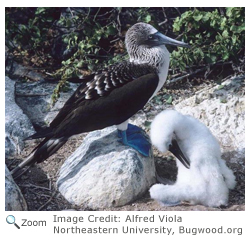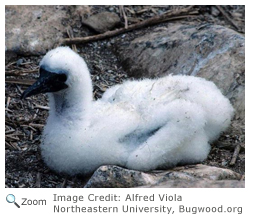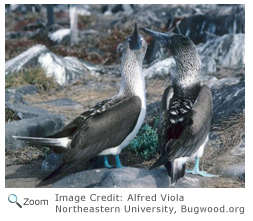Life Cycle
 The female blue-footed booby lays two to three pale blue or green eggs. The nest is on the ground. The eggs take about 45 days to hatch. Both parents incubate the eggs using their feet. As the eggs start to hatch, the parents will rest the eggs on top of their feet.
The female blue-footed booby lays two to three pale blue or green eggs. The nest is on the ground. The eggs take about 45 days to hatch. Both parents incubate the eggs using their feet. As the eggs start to hatch, the parents will rest the eggs on top of their feet.
 The male brings food back to the nest for the female and the chicks. The chicks take regurgitated fish from their parents' bills. The chicks stay with their parents for about two months. The blue-footed booby nests in colonies.
The male brings food back to the nest for the female and the chicks. The chicks take regurgitated fish from their parents' bills. The chicks stay with their parents for about two months. The blue-footed booby nests in colonies.
Behavior

Blue-footed boobies have a very elaborate mating ritual. The male raises one blue foot in the air and then the other as he struts in front of the female. Both the male and the female stretch their necks and point their bills to the sky. The male spreads his wings and whistles. The female may tuck her head under her wing.